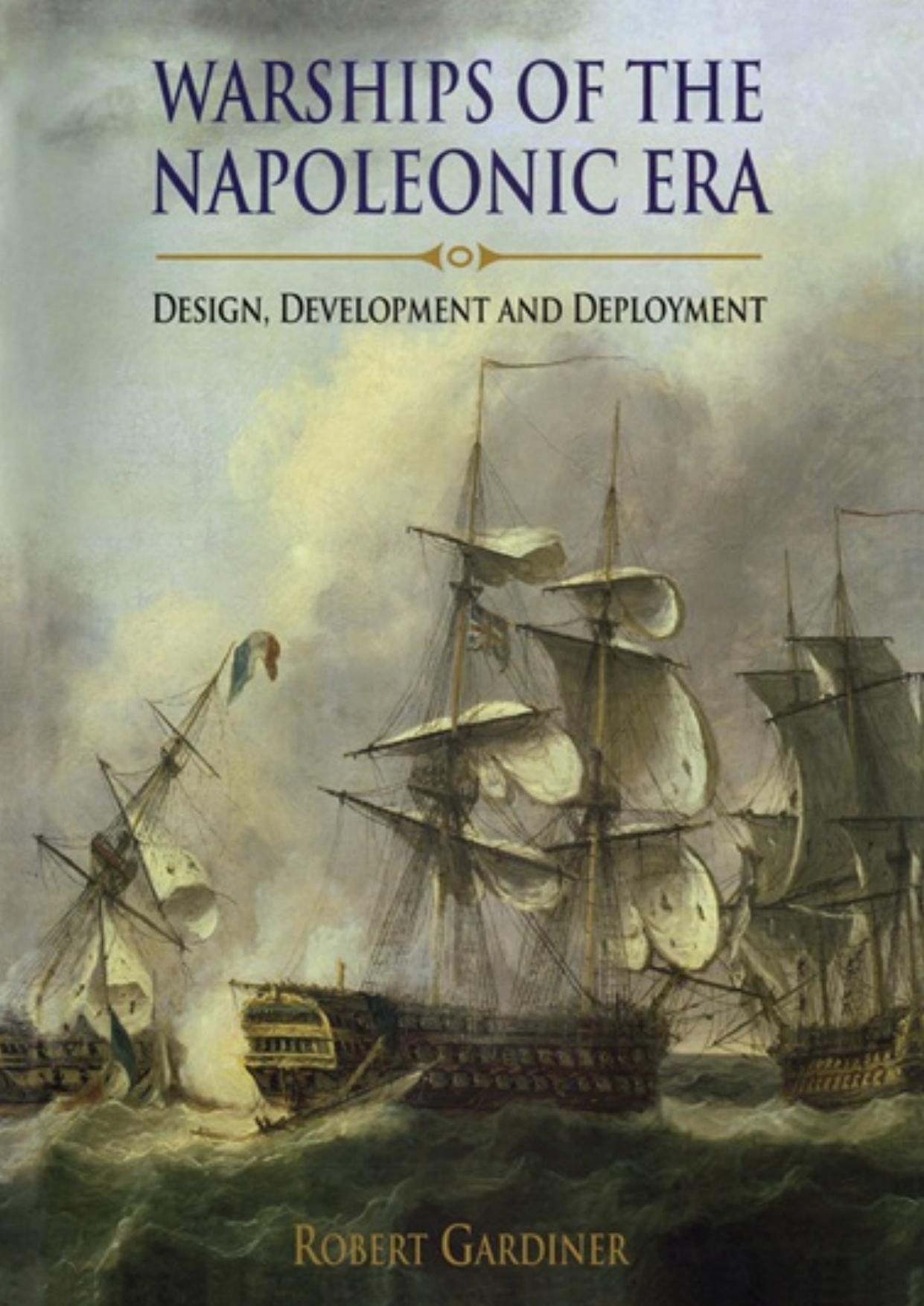Warships of the Napoleonic Era by Robert Gardiner

Author:Robert Gardiner
Language: eng
Format: epub, pdf
ISBN: 9781473820548
Publisher: Seaforth Publishing
AN anonymous watercolour showing a British frigate and two cutters close inshore. The cutter to the right, shown getting underway, has no obvious gunports but the clinker-built one in the foreground is pierced for twelve guns and may well be naval. The depiction of the craft themselves and the details of their handling shows a seaman-like familiarity with the subject. (PY4080)
Another Bermudian prototype, the sloop Lady Hammond, had just been chosen for a new design of twice the tonnage, and some of these were rigged as cutters – court martial records show Alban, Cassandra, Claudia and Laura were cutters when lost, and Alphea, Barbara and Zenobia were schooners. The hull form of these Bermudian vessels, with their sharp V-section and deep drag aft were closer to traditional English cutters – hence the alternative rigs – than to the shallow American Virginia pilot boat model. However, it was one of the latter that was chosen as the prototype for the Navy’s last purpose-built schooner design of the war, the three-masted Shamrock class of 1808, modelled on the Baltimore-built Flying Fish, ex-Revenge. This was actually a reversal of policy since the original design for the advice schooners was the Virginia pilot boat Swift of 1794, which had a very flat ‘skimming dish’ hull form quite unlike the Bermudian model eventually chosen with the Ballahous.39
The Navy built small numbers of large cutters in the remaining years of the war, but the vast majority of schooners, cutters – and for that matter, luggers and other small craft – were obtained from the enemy or the merchant service. Curiously, though, the success of large American privateer schooners in the War of 1812 had no immediate effects on the Navy’s building policy, although there was a short-lived desire to copy the Prince de Neufchatel.
Both main types served on virtually every station, but there was a tendency to prefer the schooner on the North American and West Indies stations and the cutter nearer home. Even the advice schooners sometimes served in offensive roles – the Snapper, for example, was captured while interrupting local shipping on the French coast in July 1811 – and both were often attached to blockading squadrons for inshore scouting. One particular task – coping with the swarm of small privateers – required large numbers of small craft, mostly schooners, on the West Indies stations throughout the war.
BUSY CUTTER.
Download
Warships of the Napoleonic Era by Robert Gardiner.pdf
This site does not store any files on its server. We only index and link to content provided by other sites. Please contact the content providers to delete copyright contents if any and email us, we'll remove relevant links or contents immediately.
MESSERSCHMITT Bf 109 by Chris Goss(520)
A History of the World in 500 Walks by Sarah Baxter(464)
Chevrolet 1960–2012 by Davis Michael W. R(424)
Warships of the Napoleonic Era by Robert Gardiner(419)
Spitfire: A Very British Love Story by John. Nichol(366)
Three’s Company by Jack T. C. Long(352)
Fodor's Tokyo by Fodor's Travel Guides(347)
Frommer's EasyGuide to Tokyo, Kyoto and Western Honshu by Beth Reiber(343)
Alfred Mylne: The Leading Yacht Designer: 1896-1920 by Nicolson Ian(333)
Focke-Wulf Fw 190 by CHRIS GOSS(320)
Off Grid Mobile Solar Power Installation in 1 Hour : A Step by step Guide to Design and install 12 Volts Solar Power System on Vans, RVS, Boats and Mobile Homes by Barone Larry & Barone Larry(316)
Microsoft Teams 2020 Crash Course: A Microsoft Teams Cheat Sheet and Quick Reference Guide for Beginners, Teachers and Educators by Steve Carter & Steve Carter(302)
Mustang and the Pony Car Revolution by Davis Michael W. R(301)
Midtown Sacramento by William Burg(283)
NASCAR Then and Now by Ben White(271)
Rails Across Ontario by Ron Brown(254)
The Space Shuttle Endeavour (Images of Modern America) by Silberkraus Stephen Hayward(195)
